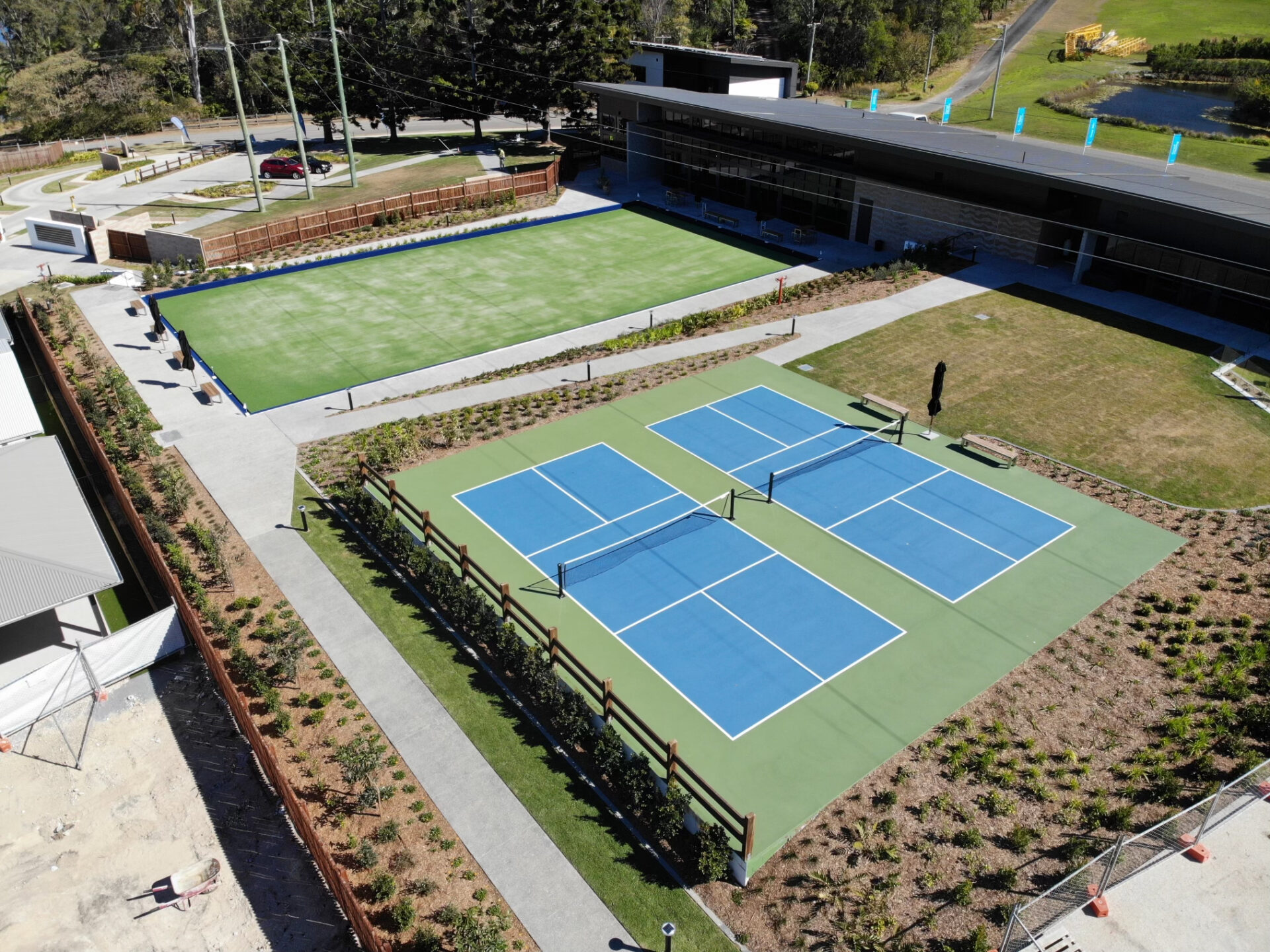
Tennis Court Builders in Brisbane
Trust Our Tennis Court Builders in Brisbane for New and Restored Sports Courts
Having a tennis court on your property adds excitement to your daily exercise routine and creates more opportunities for hosting active social events at home. The Sports Court Builders offers you a team of experienced tennis court builders in Brisbane who can help design and construct your dream backyard court. We build our courts to last, giving you years of quality tennis time with your family and friends under the South East Queensland sun.
What To Consider Before You Build a Tennis Court at Home
Building a tennis court can add to your property value, and it often creates a sense of luxury that may help attract wealthier buyers. Tennis is a national favourite in Australia, and having your own court will surely make for many memorable afternoons with friends. Here is what you should consider before building a new tennis court in your backyard.
- Space and location. Measure your backyard to check whether you have enough room for a tennis court. To build a standard recreational court, you will need 23.77m by 10.97m, excluding fencing, side runs, and run-backs. The ideal domestic court should not be less than 30 x 15 metres in size. Consider the glare factor, access, and complimentary landscaping features when choosing a location for your tennis court.
- Building regulations. You should not require planning permission to build a tennis court on your Brisbane, Gold Coast, or Sunshine Coast property. Contracting a builder with the relevant license to construct sports courts in your area is a necessity. You can ask your builder to provide a license number before engaging their services. Some construction components may be subject to council approval, such as fencing or earthworks.
- Lighting. Choosing appropriate lighting allows you to play tennis in the evenings and prevents light spillage outside the play area. LED downlights are ideal for tennis courts as they offer bright, uniform illumination across the court. High-quality downlights are durable and energy-efficient, affordable to run and provide a high return on investment. Cleaning your lamps regularly can help reduce dust build-up and extend their lifespan.
- Surface choice. Many surface options are available for a residential tennis court, from synthetic grass to acrylic hard courts. The surface you choose can affect how you use the court and the quality of play. Each unique surface requires a different level of planning and construction that may impact building and maintenance costs. Your builders will help you choose the best court surface for your sporting and social needs.
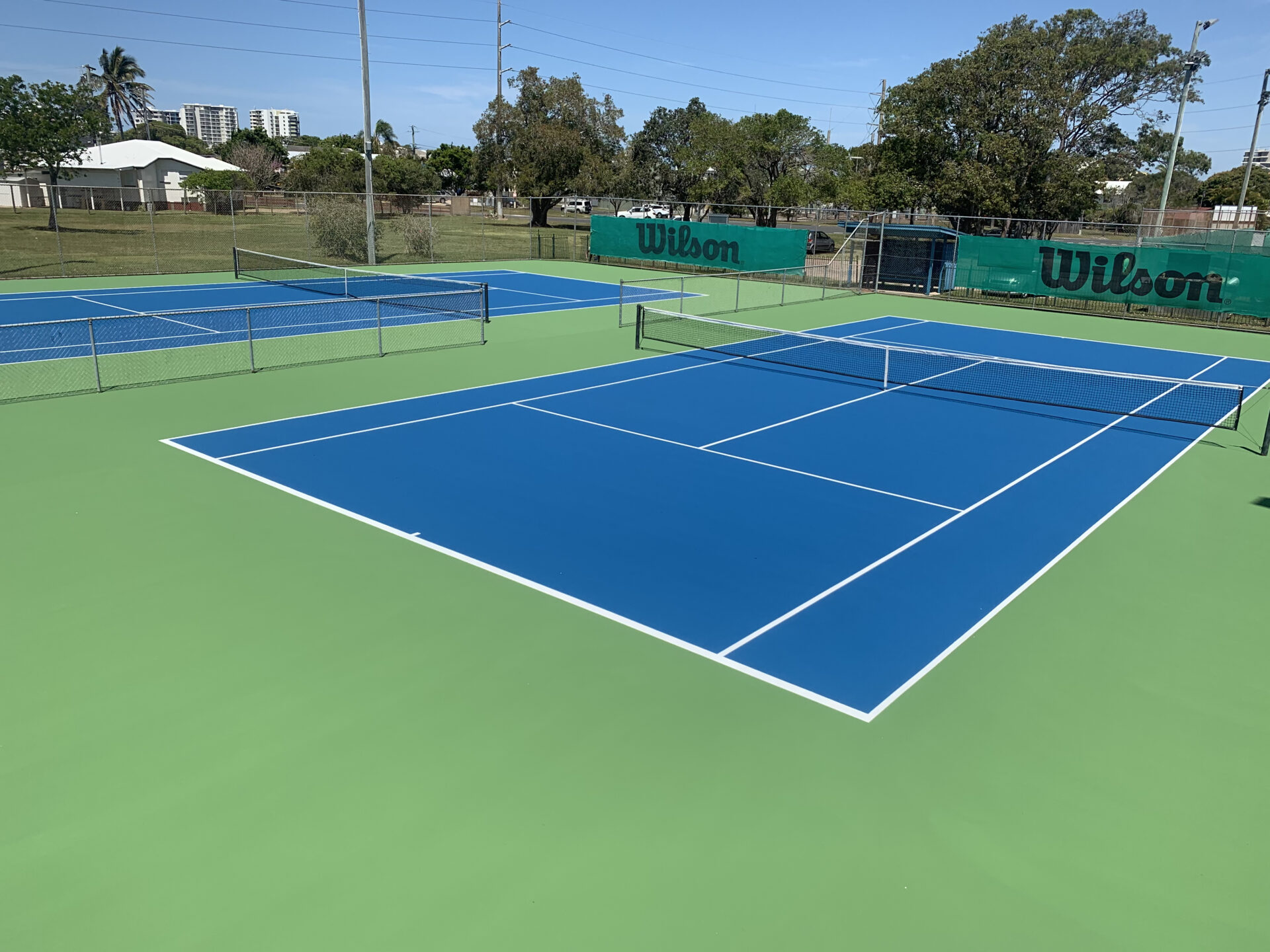
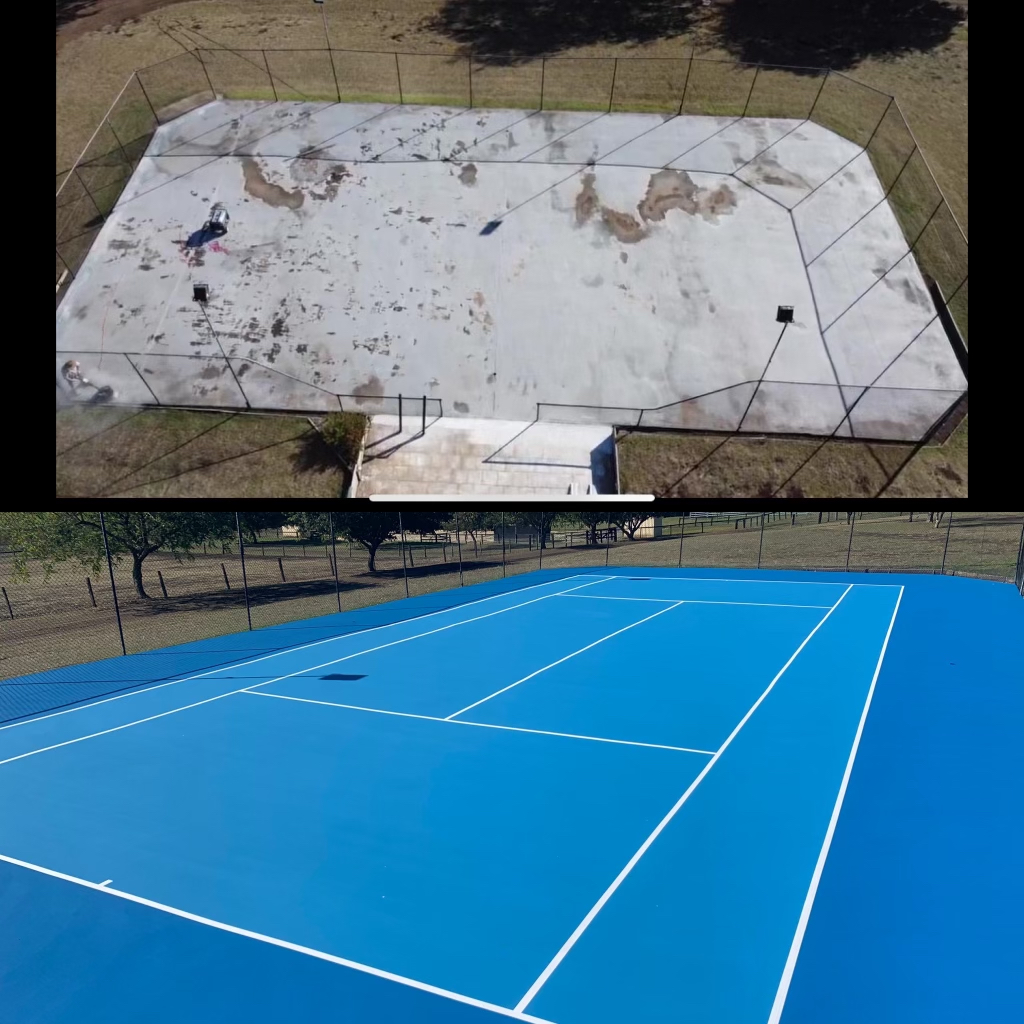
Four Types of Tennis Courts for Backyards
Tennis is celebrated around the world and played on all types of surfaces, from engineered tournament courts to grassy public parks. Choosing a surface for your private tennis court depends on the budget, maintenance requirements, intended use, and aesthetic appeal. Here are four of the most popular types of tennis courts, their restrictions and benefits:
- Acrylic hardcourts consist of concrete or asphalt covered with a layer of acrylic or polyurethane paint. This surface is flatter than most others, offering consistent bounce levels across the court. Incorporating a rubbery layer into their construction may also reduce the impact on your joints. Hardcourts are very durable and require minimal maintenance. Both the US and Australian Open are played on synthetic hard courts.
- Clay courts are made from natural stone or brick and offer the slowest playing speed of surfacing options. These courts have high bounce levels and work well for playing long rallies. Players also slide easily across this soft surface, reducing impact shock, which may help prevent injury. Clay courts require lots of maintenance - they need constant watering to keep the surface smooth and soft, but they are ideal for rainy and humid climates.
- A Synthetic Grass tennis court offers the softness and speed of natural grass without the intensive maintenance requirements. Building a tennis court with synthetic turf gives you consistent ball speed and spin across the surface. You can choose from various pile heights and thicknesses that will affect the bounce height and how the ball rolls off the surface. An artificial grass tennis court is a durable and low-maintenance choice.
- Concrete and asphalt courts are constructed similarly to hard courts without the final acrylic layer. They typically offer slow- to medium-paced games. Construction quality is paramount for these courts as the material can easily create uneven surfaces, resulting in inconsistent ball bounce, spin, and speed. You will need to repaint the markings regularly and keep the court dry to protect it from damage.
Restoring a Damaged Tennis Court
Tennis courts require regular maintenance to keep them looking neat and functioning well. We offer complete tennis court resurfacing in Brisbane to help repair old, dilapidated courts to get you back into the game sooner. Here is what you should know about refreshing an old tennis court, including assessing the problem and how to prevent future damage.
- Common types of damage: Moisture is the biggest cause of deterioration for many sports courts, and most damages arise from below the surface. Trapped moisture can cause the surface to blister and bubble. It can also cause stripping of the bonds between the aggregates, compromising the structural integrity of the court and creating cracks. Improper drainage may lead to rainwater pooling, increasing the risk of permanent damage.
- Tennis court resurfacing involves replacing the entire upper layer of the court. A resurfacing project may be necessary if deep cracks in the tennis court make it unplayable and unsafe. Professional court builders will clean the existing surface before applying the new one to prevent mould and dirt from compromising the new finish. Depending on its use, you may need to resurface your tennis court every three to five years.
- Tennis court surface repairs. If you only have minor damages on your court, you may not need to resurface it completely. There are many other tennis court restoration methods you can use to keep it free from surface cracks, splitting seams, and pitting. Applying a new non-slip layer can help keep your tennis court safe, and regular high-pressure cleaning helps reduce the rate of fading and discolouration.
- Tennis court maintenance tips: Sweeping your tennis court regularly prevents dirt build-up that may affect the surface porosity, leading to flooding and water damage over time. Professional sports surfacing contractors can also spray your tennis court with anti-microbial chemicals to kill algae and mould that can create cracks. Regular pressure washing can help maintain proper drainage.
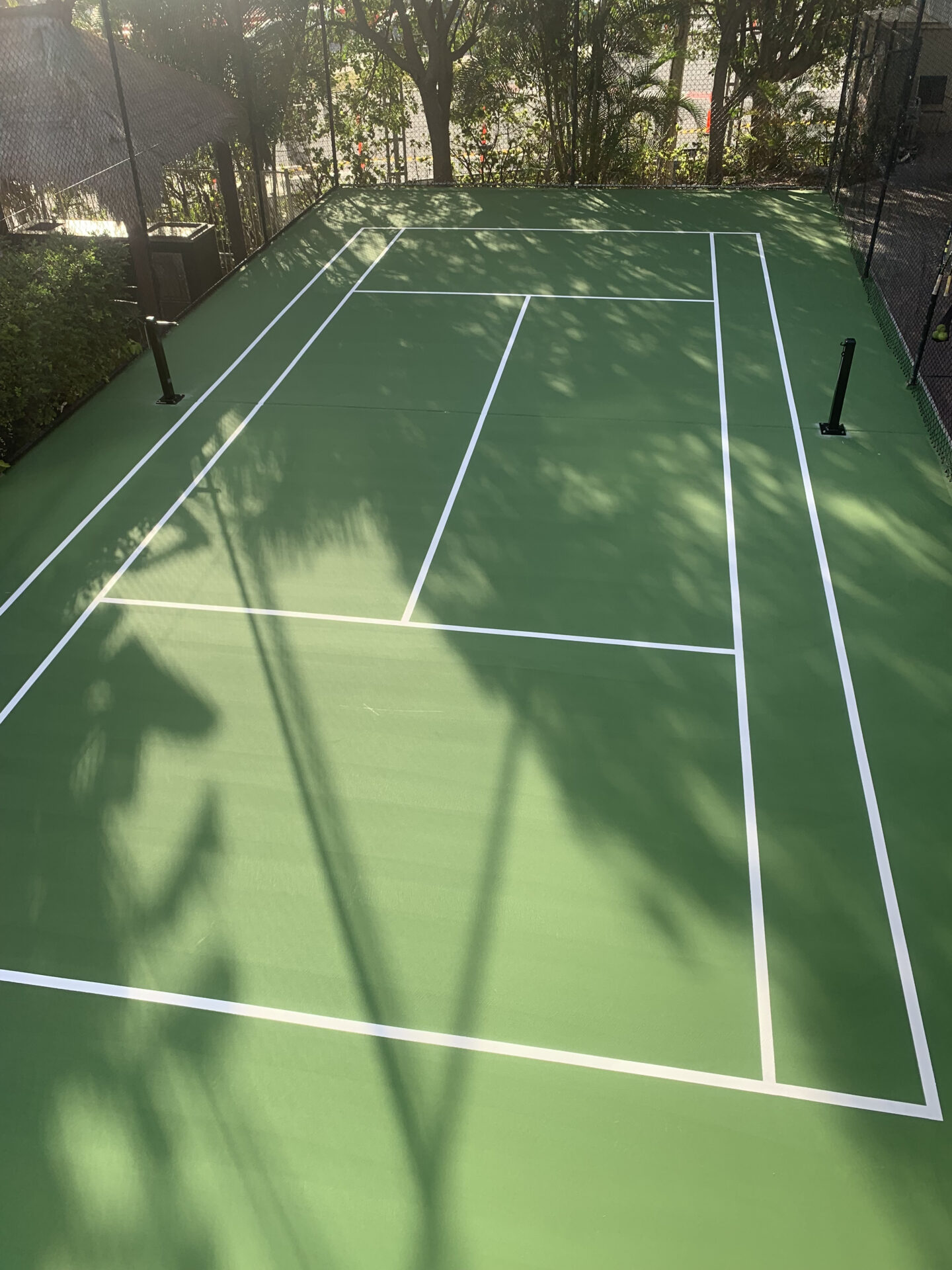
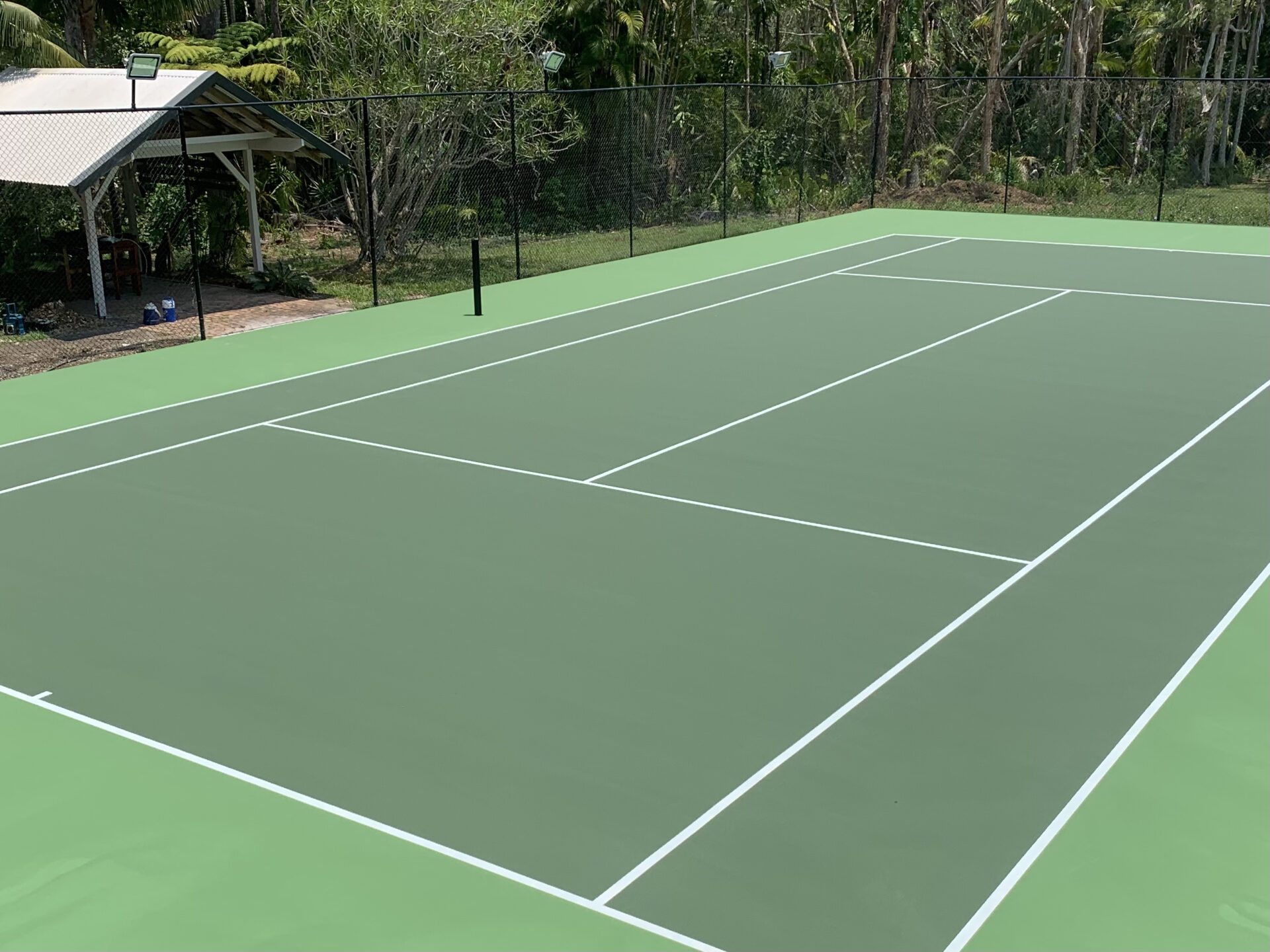
Find Experienced Tennis Court Builders in Brisbane
The Sports Court Builders are trusted tennis court contractors with ten years of industry experience behind us. We are passionate about sports and helping you create the perfect environment for your next match right outside your back door. We offer new builds and tennis court resurfacing on the Gold Coast to ensure your court is always neat, playable, and safe. Our professional team will gladly guide you through our court construction systems to help you get the best tennis court for your needs.
Contact us and get a quote today.
Create the Court of Your Dreams
Connect with us today so we can start working on your sports court project. We look forward to hearing from you.
